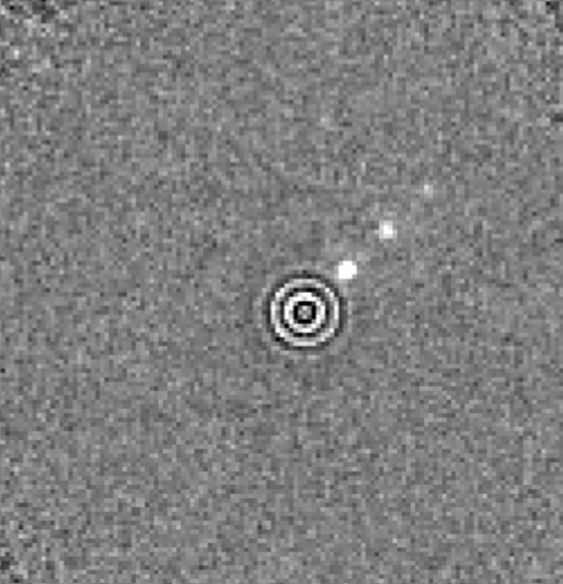Daily Image
11-01-2008Search for Exoplanets
| Submitter: | Ronald Roelfsema |
| Description: | Direct imaging of reflected light from an old Jupiter-like extra-solar planet has not yet been achieved due to the very high intensity contrast (10**-8) and the small angular separation between the planet and its parent star. One goal of SPHERE, the ESO planet finder instrument, is to perform such a direct detection using the 8-meter ESO Very Large Telescope, an extreme adaptive optics system, a stellar coronagraph and (among others) a sophisticated polarization imager called ZIMPOL (Zurich IMaging POLarimeter). ASTRON, together with ETH-Zurich, is responsible for the design, manufacturing, testing and commissioning of ZIMPOL. Light scattered off a gas planet's atmosphere becomes polarized in the process. This property provides the possibility to detect a polarization signal from a planet among the unpolarized residual light halo of the coronagraphic, adaptive optics corrected image of a bright star. The image shows a detection simulation of a G0V star at a distance of 3 parsec with several strongly polarized (50%) planets. The Airy pattern of the almost completely obstructed star is shown in the centre and next to it the three planets separated by 0.1, 0.2 and 0.3 arcsec from their sun. The simulation is provided by Christian Thalmann from ETH-Z. The SPHERE (SPectro-Polarimetric High-contrast Exoplanet REsearch) instrument is foreseen to achieve first light in 2011. |
| Copyright: | ZIMPOL team |
| Tweet |  |
